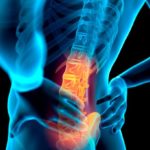Joint Pain
With Many Potential Sources
The most common of these is Osteoarthritis.
Others include (but are not limited to): Rheumatoid Arthritis, Sprains, Tendinitis, Bursitis, Dislocation, Gout, Lyme Disease, Fibromyalgia, Avascular Necrosis, and Metastatic Cancer.
For the purposes of this post, we will be focusing on Osteoarthritis
Overview
Osteoarthritis (OA) is the most common form of arthritis. It affects over 32.5 million US adults.
Some people call it degenerative joint disease, or “wear and tear” arthritis. It occurs most frequently in the hands, hips, and knees.
With the onset of OA, the cartilage within a joint begins to break down and the underlying bone begins to change. These changes usually develop slowly, and get worse over time. OA can cause pain, stiffness, and swelling, and – in more severe cases – it can reduce joint function to the point of disability: some chronic sufferers are no longer able to do daily tasks or work.
Symptoms generally include:
- Persistent joint pain.
- Stiffness.
- Decreased range of motion (or flexibility).
- Swelling.
Risk factors for OA include:
- Injury
- Overuse—defined as heavy or repetitive stress on a particular joint.
- Age
- Gender—Women are more likely to develop OA than men, especially after age 50.
- Obesity—extra weight puts more stress on joints, particularly weight-bearing joints like the hips and knees. Obesity may also have metabolic effects that increase the risk of OA.
- Genetics—OA is hereditary; further, having OA in one joint increases the risk factors for other joints.
- Race— Some Asian populations have lower risk for OA.
See Also: This Week in Health: Low Back Pain

Diagnosis & Treatment
Initial Diagnosis
Basic history and physical exam is the starting point.
X-rays are invaluable in identifying changes in the internal bone structure and/or joint space narrowing consistent with OA.
Serum lab studies can rule out any systemic inflammatory conditions (such as rheumatoid arthritis, etc).
Advanced Diagnosis

MRI imaging can identify any muscle, cartilage, ligament, or tendon injuries that might contribute to the condition.
Initial Treatment
- Increasing physical activity.
- Physical therapy with muscle strengthening exercises.
- Weight loss.
- Medications, including over-the-counter pain relievers and prescription drugs.
- Non-steroidal anti-inflammatory drugs (NSAIDS) – both oral and topical
- EDIT to add: Supplements! (see comments below)
- Supportive devices such as crutches or canes
Advanced Treatment
- Bracing
- Corticosteroid injections
- For knees, viscosupplementation injections
- Nerve Blocks and radiofrequency ablation (RFA) (for spine joints, knees, and sacroiliac joints)
- Experimental stem cell injections
- Opioids (to be considered carefully, with risk stratification and close monitoring)
- CBD products, both oral and topical, have some anecdotal evidence of benefit, but should only be used with full disclosure to one’s MD, and in accordance with State laws.
- Surgery
- Arthroscopic “clean-up”
- Total or partial joint replacements
So tell us YOUR story!
Ask questions!
Disclaimer: This is an informational post designed to foster discussion. It should not substitute for the advice of your doctor.
Edited by: WhiteKnightLeo
